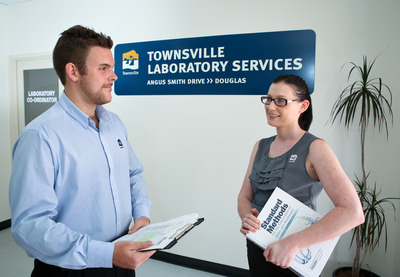Creating a more efficient lab management process for better customer services
Thursday, 17 October, 2013
Townsville Laboratory Services is composed of a chemical laboratory and a microbiological laboratory which analyse samples for open waters, treated drinking water, trade waste, sewage and other environmental samples. The lab services a range of organisations throughout Queensland, including local government shires and councils, hospitals, universities and schools.
Townsville City Council was keen to implement a laboratory information management system (LIMS) to create a more efficient process and better customer services. Its aims were to improve data quality, reduce time of manual data entry from instrumentation, reduce data transcription errors and improve business efficiency.

It sought the following in a LIMS:
- Job and sample registration and tracking
- Integration of laboratory instruments
- Generation of reports and certificate of analysis
- Audit trails to satisfy NATA
- Result authorisation
- Ease of searching data
- Production of quality control charts
- Linking of invoices to the council’s finance system
Laboratory coordinator Edgar Salvador chose Lims1 for the lab’s solution. The system was flexible, met all predefined needs and proved to be easy to configure and learn. It was also already installed in most other council laboratories on the east coast.

Lims1 Product Consultant Amanda Orphanides said, “When we first started talking with Edgar … it became apparent that their main need was to streamline the process of sample tracking in the laboratory.” Lims1 Project Manager Ian Forwood added that the lab “had some quite specific needs” and the company “used the flexibility of the system to deliver on those”.
The implementation process first confirmed customer requirements and resources, before a schedule was developed in collaboration with the client. Forwood noted, “Mapping out all needs and detailed processes at the start are absolute key for a successful outcome at the end.”
Next, a pilot database was built to reflect workflows and processes. Once the software and pilot database were installed they were tested; run by the client in parallel to the current system. Once testing was completed, the remainder of the configuration data was added, followed by the historic data.

The LIMS project moved to production and went live. Lims1 continues to follow up on the project and exchange feedback on an ongoing basis.
The results have been positive, with Salvador saying, “The efficiency gains are showing [their] effect in the lab’s turnaround time and better job allocation for the lab teams.” The staff can focus on quality chemistry rather than administration tasks and there is a decrease in manual data entry errors due to integration of instrumentation with Lims1. Overall, it means the business has been able to grow.
“Lims1 is one of the lab’s best investments and is fast becoming a productivity tool,” concluded Salvador.
Transforming health care through digitisation
Australian health regulations require medical records to be retained for decades, with physical...
AI hallucinations are eroding trust in lab tools — but there are solutions
Several key factors will shape whether AI becomes a truly reliable scientific partner or remains...
Cutting turnaround times without cutting corners
Modern, cloud-based laboratory information management systems (LIMS) can help avoid many of the...



